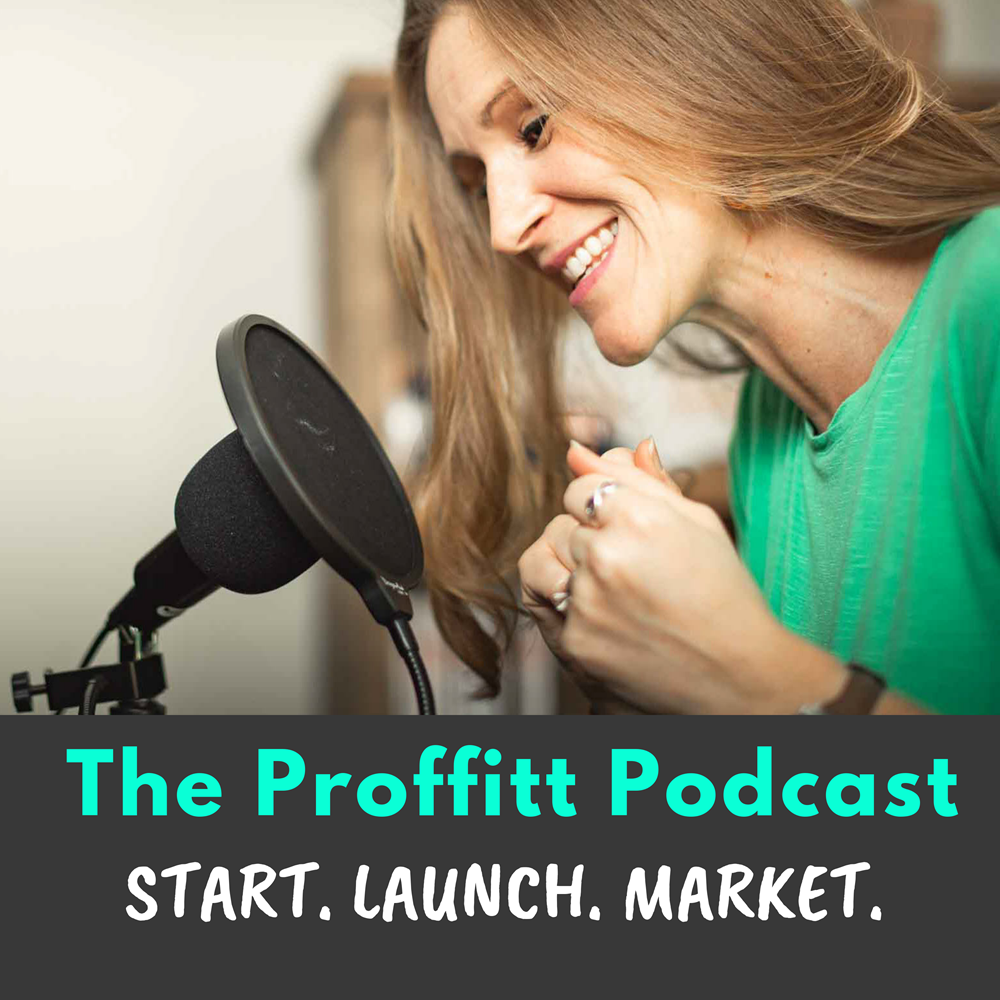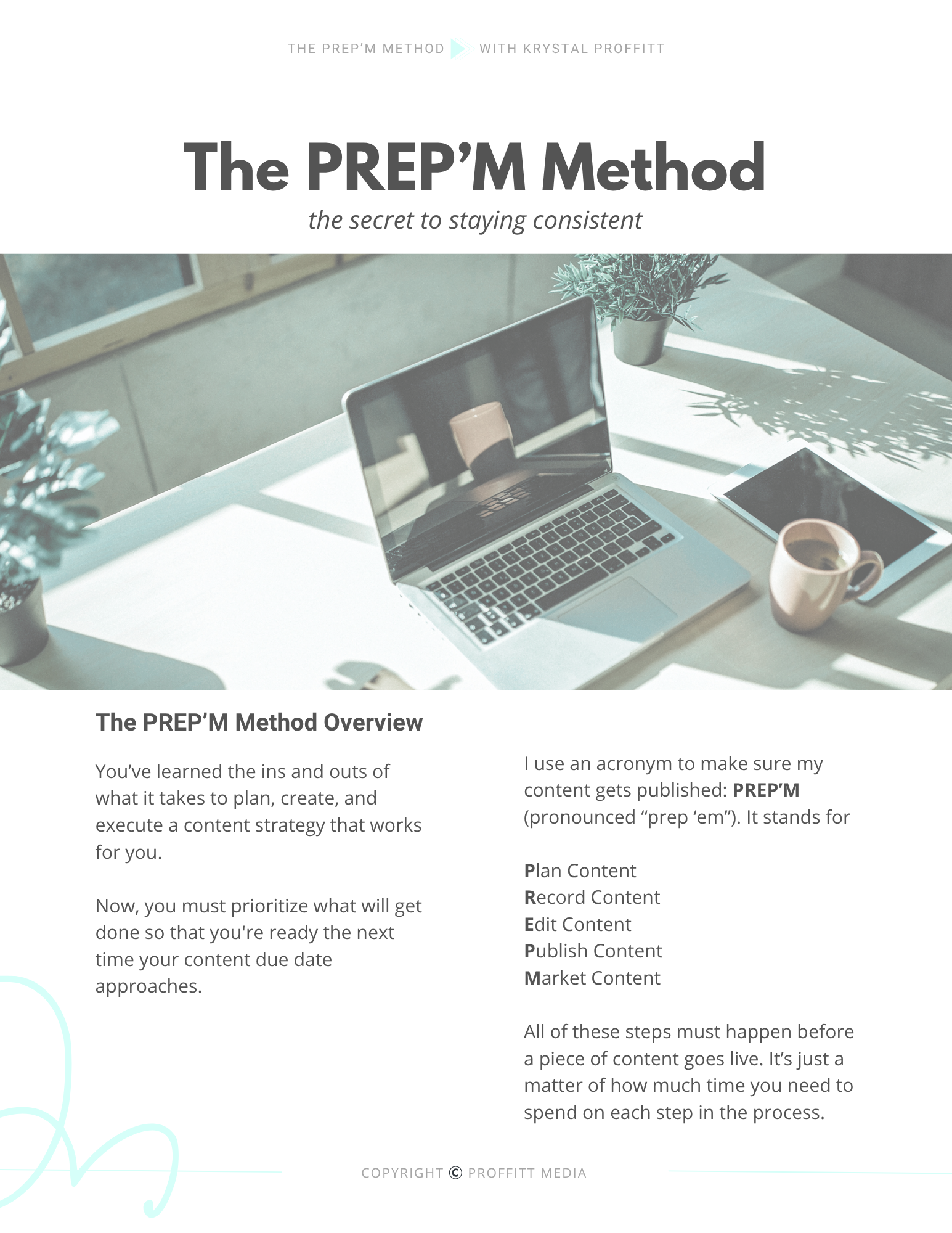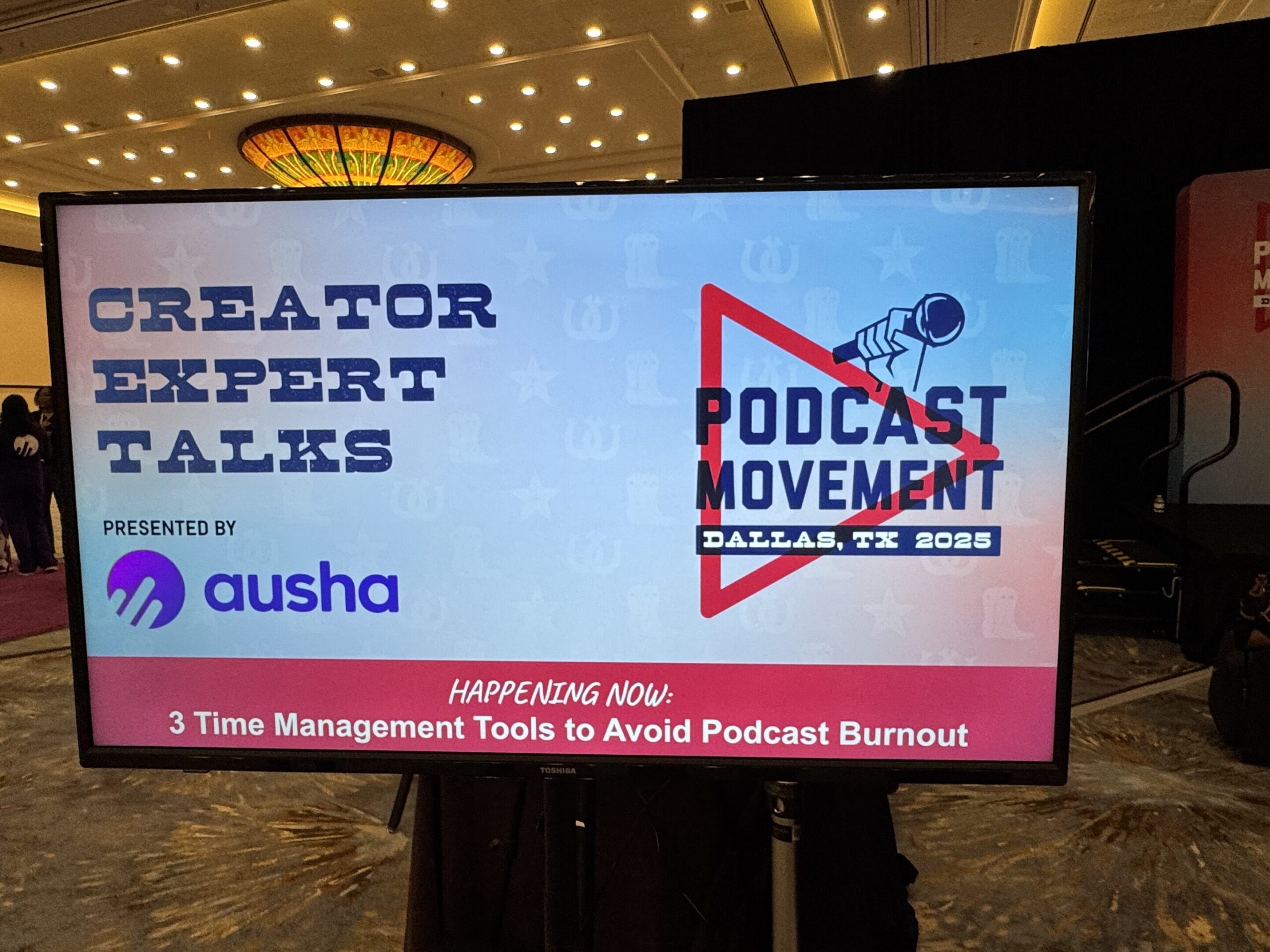Behind the Scenes of the Proffitt Podcast: How I Stay Organized and Never Run Out of Ideas
Introduction
Are you ready for a behind-the-scenes look at what goes into creating this podcast every week? I know you said yes. You’re some of the biggest fans of behind-the-scenes content, and today, I’m sharing the processes that keep the Proffitt Podcast on track and ahead of schedule. After more than three years of podcasting, I’ve developed some incredible processes that I’m excited to share with you. So, let’s get right to it. Welcome to the Proffitt Podcast, where we teach entrepreneurs how to start, launch, and market their podcasts. I’m your host, Krystal Proffitt, and I’m so excited that you’re here. Thanks for hanging out with me today. If you’ve been trying to figure out the world of podcasting, think of this show as the time-saving shortcut you’ve been looking for. Let’s dive in!
My Journey from Unorganized to Today
I’m really excited about today because I have become nerdier and more organized as my podcasting journey has unfolded. At the beginning of my podcast journey, I struggled to keep everything organized. Finding a system that works with how my brain functions was challenging. I tried out many different platforms before settling on two that work best for me today. And the best part? They’re both free!
Solopreneur or Podcast Team
Whether you’re a solo podcaster or working with a team, the systems I share today can be adapted to fit your needs. If you start implementing these processes now, it will be much easier to train someone else to help you in the future. I learned this firsthand when I brought a project manager onto my team. She helped me streamline my business, and even after she left, the systems we developed together continued to keep me organized.
Tools I Love to Use: Google Sheets & Asana
Today, I’ll be sharing how I use Google Sheets and Asana to keep my podcast content organized and on track.
Google Sheets
First up is Google Sheets. This tool is essential for planning my content calendar. Inspired by an episode of Amy Porterfield’s podcast on creating a content calendar, I downloaded her Google Sheets template and customized it to fit my needs.
Why I Use Google Sheets
Google Sheets is free and accessible from anywhere, which is perfect for jotting down ideas on the go. It helps me keep track of important details like the episode number, publish date, and episode topic. Here’s a breakdown of the columns I use in my Google Sheets:
- Day of the Week: This helps me keep track of when episodes are published. I categorize everything by the day of the week and hide rows for days I don’t publish content to keep it less overwhelming.
- Publish Date: Knowing the exact date an episode will be published helps me stay on track and plan ahead.
- Topic/Title: This column helps lay the foundation for each episode. I jot down the working title or topic, which helps shape the content.
- Episode Number: This reminds me of the episode number for show notes and ensures I stay organized.
- Dynamic Content: A newer feature from Buzzsprout, dynamic content allows me to add audio clips at the beginning or end of an episode. I keep track of which dynamic content I’ve used and when to keep things fresh.
- Notes: This column is for any additional information, links, or references related to the episode.
- Opt-In: If I have a specific lead magnet or freebie, I note it here to remind myself to mention it in the episode.
- Link to Post: Ideally, I would link to the show notes here for easy reference. It’s a work in progress.
Highlighting for Organization
Once an episode is recorded, I highlight the entire row in gray. When the episode is fully published, shared, and marketed, I change it to one of my brand colors. This visual system helps me see at a glance which episodes are in progress and which are complete.
Asana
Now, let’s talk about Asana. This project management tool is crucial for keeping me on task and ensuring deadlines are met. I assign tasks to myself with specific deadlines, which helps me stay organized and proactive.
How I Use Asana
Every month, I upload my content calendar into Asana. Each task includes the episode number, notes, and deadlines. Here’s a quick example of how I organize my tasks:
- Monday: Create show notes for the Tuesday episode. The episode should already be edited and uploaded to Buzzsprout.
- Throughout the Week: Work on social media posts, marketing materials, and other related tasks.
Assigning tasks with deadlines in Asana ensures that I stay on track and can manage my time effectively. This is especially important during busy periods or when I have less control over my schedule.
Why This Matters
Without these systems, I would have no idea what episode I’m on or how it relates to my current promotions. Having a well-organized content calendar allows me to be strategic and ensure that my content adds value without feeling like a constant sales pitch.
Conclusion
That’s all I have for you today! I hope you found this behind-the-scenes look at my content planning process helpful. If you want to see more of how I do this, check out the show notes at KrystalProffitt.com/episode265. Follow the podcast wherever you’re listening and leave a rating and review. And remember, keep it up. We all have to start somewhere.




Comments +